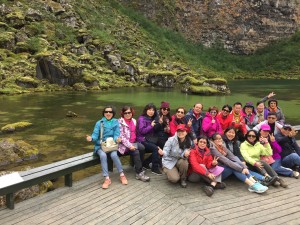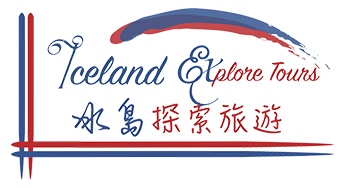This ring tour is ideal to experience Iceland as a whole in beautiful summer bright days when the weather is supposed to be the best in the year. It offers tourists to see different parts of the country with stunning scenery under professional guidance. This tour is available only in the summer, from May to Mid-September.
Itinerary:
Day 1: Airport pick up in the afternoon. Transfer to Reykjavík. Overnight at Reykjavík.
Day 2: Golden Circle: Þingvellir National Park, Geysir hot spring, Gullfoss Golden Waterfall. Overnight at Reykjavík.
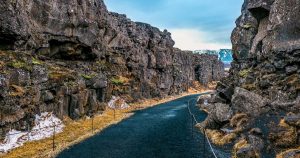
Day 3: South Coast: Seljalandsfoss Waterfall, Skógafoss Waterfall, Dyrhólaey, Reynisfjara Black Sand Beach, Vík. Overnight at Vík.
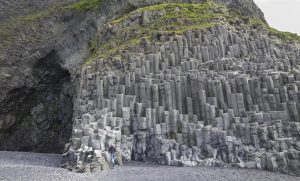
Day 4: Katla Ice Cave Tour, Fjaðrárgljúfur Cannyon. Overnight at Kirkjubæjarklaustur.
Fjaðrárgljúfur: a magnificent and massive canyon, about 100 meters deep and about two kilometres long. The canyon has sheer walls, and is somewhat serpentine and narrow. The bedrock in Fjaðrárgljúfur is mostly palagonite from cold periods of the Ice Age and is thought to be about two million years old. The river Fjaðrá has its source in the mountain Geirlandshraun and falls off the heath edge in this stunning canyon until it makes it down into Skaftá river.
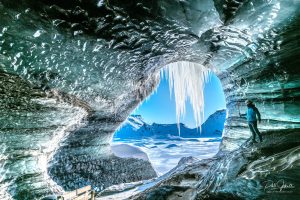
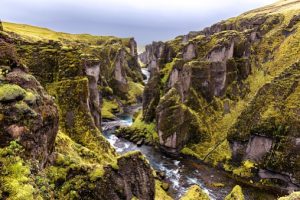
Day 5: Skaftafell National Park and Svartifoss Waterfall. Fjallárslón Glacier, Jökulsárlón Glacier and boat cruise. Overnight at Höfn.
Skaftafell National Park was established in 1967 but in 2008 it became part of the newly established Vatnajökull National Park. It contains some of the most precious natural pearls of the country. The rugged landscapes, mountains and glaciers, the flora and fauna have a magnetic influence on the visitors.
Svartifoss / Black Falls: Ice-cold meltwater from the Svinafellsjokull glacier feeds the famous Svartifoss waterfall. The waterfall tumbles down 20 metres (80ft) over a cliff which is bordered on both sides by tall black basalt columns, resembling pipes of a giant organ, which is where the waterfall gets its name. The hike to the fall from the visitor centre is 1.8 km one way.
Fjallsárlón: The glacier crawls down a steep slope until it reaches down to the water. At the edge of the glacier, icebergs break off into the lagoon and drift serenely around before melting. The icebergs are different in size, shape, and hues that make the appearance of each iceberg unique. Wherever you look you can see how the natural forces of the glacier have shaped the landscape. Not only is the glacier constantly sculpting the landscape but also depending on the weather the scenery takes on different forms. This makes each visit to Fjallsárlón a unique individual experience because the scenery is constantly changing.
Jökulsárlón-Glacial Lagoon is one of Iceland’s natural wonders. In the winter months, we will stroll around the lake to enjoy its beautiful scenery. Situated at the head of the Breiðamerkurjökull glacier, it developed into a lake after the glaciers started receding from the edge of the ocean. Four Hollywood movies have been set in Jökulsárlón: A View to a Kill, Die Another Day, Lara Croft: Tomb Raider, Batman Begins as well as the “reality TV” series Amazing Race.
Boat ride: We will enjoy an amphibian boat ride around the lagoon and taste the 1000 year old ice. Diamond Beach: Across Jökulsárlón is a beach filled with icebergs being thrown onto the shore by the waves. Because of being torn by the waves, the icebergs look like germs, hence the name.
Jökulsárlón: is considered as one of the natural wonders of Iceland. Situated at the head of the Breiðamerkurjökull glacier, it developed into a lake after the glacier started receding from the edge of the Atlantic Ocean. The lake has grown since then at varying rates because of melting of the glaciers. ökulsárlón has been a setting for four Hollywood movies: A View to a Kill, Die Another Day, Lara Croft: Tomb Raider, and Batman Begins, as well as the reality TV series The Amazing Race. We will enjoy a 30-minute boat ride in this deepest lagoon in Iceland where one can taste a bit of the 1000-year-old ice.
Overnight around Höfn.
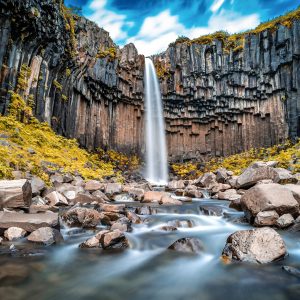
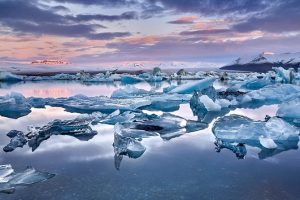
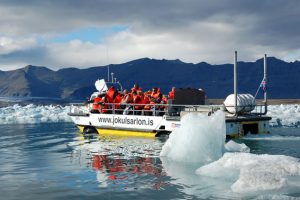
Day 6: The East Fjords: has a jagged coastline of fjords, very beautiful.
Djúpivogur, The Eggs of Merry Bay: there are 34 eggs of different sizes made with marble by the Icelandic artist Sigurður Guðmundsson, representing each of the species of local birds. The eggs are all similar in size to the actual ones except for one, which is the largest one and belongs to the red-throated diver, the characteristic bird of Djupivogur.
Egilsstaðir: The largest town in the East region with a population of more than 2,500. It is a service centre for all the residents in the East region.
An hour like one way up will leads to these two amazing waterfalls:
Litlanesfoss Waterfall: The waterfall is about 30 meters high and forms an apron in a cliff. The waterfall is in a large rock choir with an unusually regular supporting rock made of high and straight columns.
Hengifoss Waterfall: a dramatic cascade falling from a height of 128 meter over striated rock.
Overnight at Egilsstaðir.
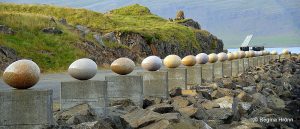
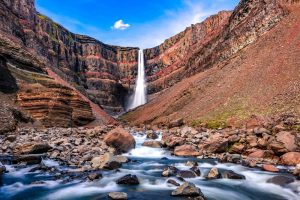

Day 7: Stuðlagil the Basalt Columns Canyon, Vök Bath. Overnight at Egilsstaðir.
Stuðlagil Basalt Columns Canyon: one of the most stunning sights in the country which merged from under the river Jökulsá just a few years ago, when its level fell and revealed this wonder of nature. Stuðlagil hosts one of the largest numbers of basalt rock columns in Iceland. Here one can see the diverse dark coloured columns in contrast with the clear blue colour of the river. To see this magnificent place requires a hike of 2.5 km one way from the parking lot to the canyon.
Vök Bath: enjoy a Geothermal spa at Vök Bath to soak away the tireness of the hike.
Overnight at Egilssatðir.
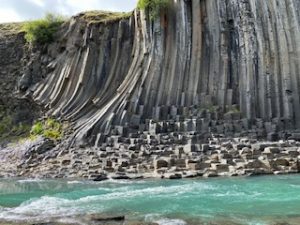
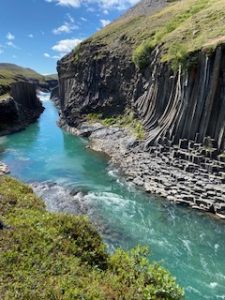
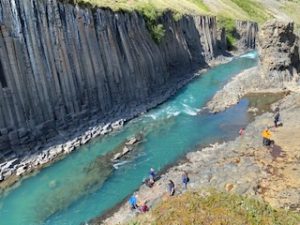
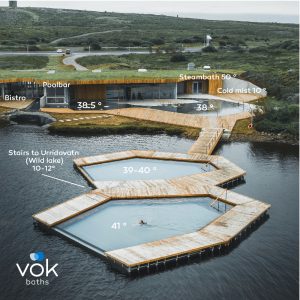
Day 8: Dettifoss( Europe’s biggest waterfall). Overnight at Mývatn.
Dettifoss: The falls are 100 metres (330 ft) wide and have a drop of 45 metres (150 ft) down to the Jökulsárgljúfur canyon. It is the largest waterfall in Iceland and also in Europe in terms of volume discharge. The fall features in opening scene of the science-fiction film Prometheus.
Hverir geothermal field: is a unique wasteland in which pools of boiling mud, hot springs and hissing chimneys give life to a desolate Mars-like scenery. Take your time to stroll around the bubbling gray puddles and the ethereal steam loudly pouring from the conical fumaroles.
Krafla Power Station, high- and low pressure steam from 18 boreholes drives two 30 MW turbines.
Built by the Icelandic government, Krafla came under the ownership of Landsvirkjun in 1985.
Overnight at Mývatn.
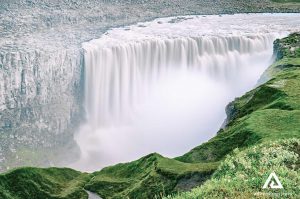
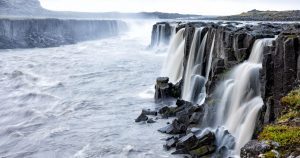
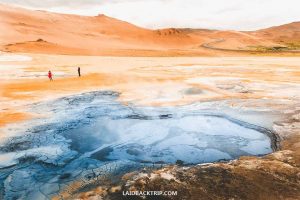
Day 9: Mývatn: Dimmuborgir, Skútustaðir pseudo craters. Mývatn´s Nature Bath. Overnight at Mývatn.
The Myvatn area has many volcanic and geothermal features.
Dimmuborgir: is composed of various volcanic caves and rock formations, reminiscent of an ancient collapsed citadel (hence the name). The dramatic structures are one of Iceland’s most popular natural tourist attractions.
Skútustaðir: there are plenty of pseudo craters in this area. By repeated explosions in a number of locations, groups of craters built up and now dominate the landscape on the shore of Lake Mývatn and also form some of the islands in the lake. This type of lava formation is known as pseudo craters or rootless vents.
After a day´s excursion it is ideal to have a geothermal spa at Mývatn´s Nature Bath.
Overnight at Mývatn.
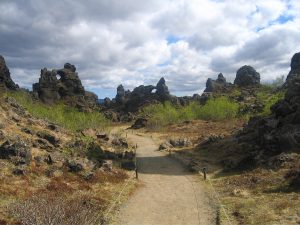
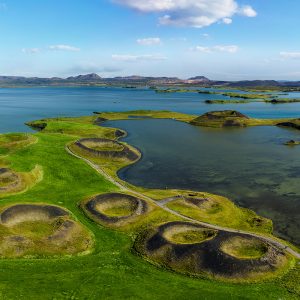
Day 10: Goðafoss Waterfall, Akureyri (Botanical Garden, the earth’s northernmost botanical garden), Hívtserkur, Koluglújfur Cannyon. Overnight at Laugarbakki.
Grábrók Craters, Glanni Waterfall. Overnight at Borgarnes.
Goðafoss: this horse-shoe shaped waterfall falls from a height of 12 meters over a width of 30 meters.In the year 1000 the Law Speaker Þorgeir Ljósvetningagoði at Althingi parliament made Christianity the official religion of Iceland. After his conversion it is said that upon returning from the parliament, Þorgeir threw his statues of the Norse gods into the waterfall, hence the name.
Botanical Garden: the northernmost one in the world, full of various kinds of vegetation.
Hvítserkur: The rock has two holes at the base, which give it the appearance of a dragon who is drinking.
Kolugljúfur: got it´s name from a guantes, Kola
Overnight at Laugarbakki.
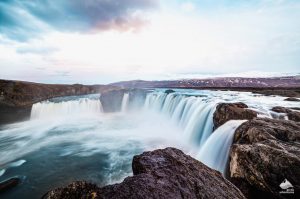
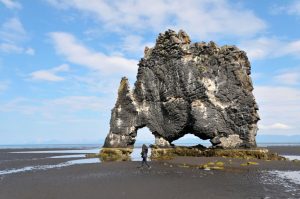
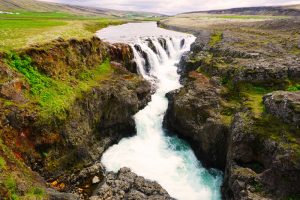
Day 11. Grábrók Craters, Glanni Waterfall, Hraunfossar and Barnafoss Waterfalls, Deildartunguhver Hot Spring, Krauma Bath. Overnight at Borgarnes.
Grábrók Craters: A hike up to the crater gives you a magnificent view of the surroundings.
Glanni Waterfall: A nice little waterfall.
Hraunfossar Lava Waterfall: a series of waterfalls formed by rivulets over a distance of 900 meters, out of the Hallmundarhraun, a lava field which flowed from an eruption of a volcano under the glacier of Langjökull. This waterfall is unique and offers you stunning and amazing views of the waterfall.
Barnafoss Children’s Fall: Just a stone up the Hraunfossar Lava Fall is the Children’s Fall. According to legend Barnafoss takes its name from two children who fell into the waterfall.
Deildartunguhver Hot Spring: Europe’s most powerful hot springs. They provide hot water to the surrounding towns of Akranes and Borgarnes, of which the pipes transporting hot water to Akranes are the longest ones in Europe. A fern called Struthiopteris fallax grows in Deildartunguhver. This fern is the only endemic fern in Iceland, and it does not grow anywhere else in the world.
Krauma: The hot water originates in Deildartunguhver, at a temperature of 100°C (212°F). To achieve the perfect bathing temperature we mix the hot water with cold water from Rauðsgil, which originates in the glacier Ok. Ok was the smallest glacier in Iceland, but is the first Icelandic glacier to lose its status as a glacier in August 2019.
Krauma offers five relaxing natural geothermal baths, a cold tub to get your blood circulation going, two calming saunas and a relaxation room where you can rest by the fireplace while listening to soothing music.
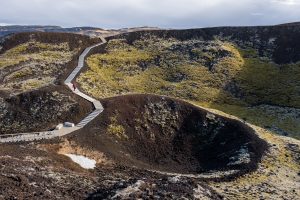
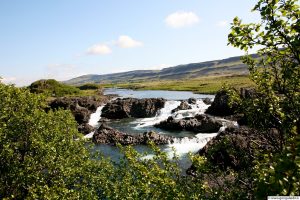
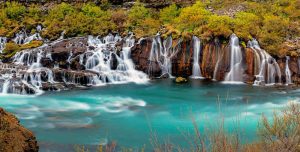
Day 12: Snæfellsnes: Grundafjörður, Kirkjufell the Church mountain and Kirkjufellsfoss Waterfall, Djúpalónssandur, Lóndrangar, Arnarstapi. Overnight at Reykjavík.
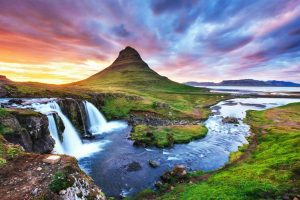
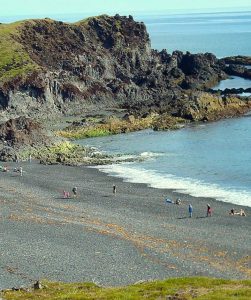
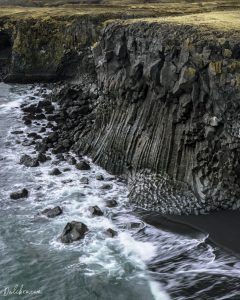
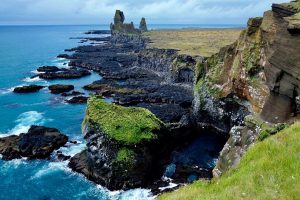
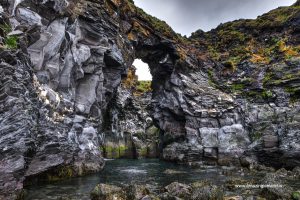
Day 13: Reykjavík city tour in the morning and Blue Lagoon spa in the afternoon. Overnight at Reykjavík.
Day 14: Airport transfer. End of service.
In June, July and August, Landmannalaugar tour can be added to this ring tour.
